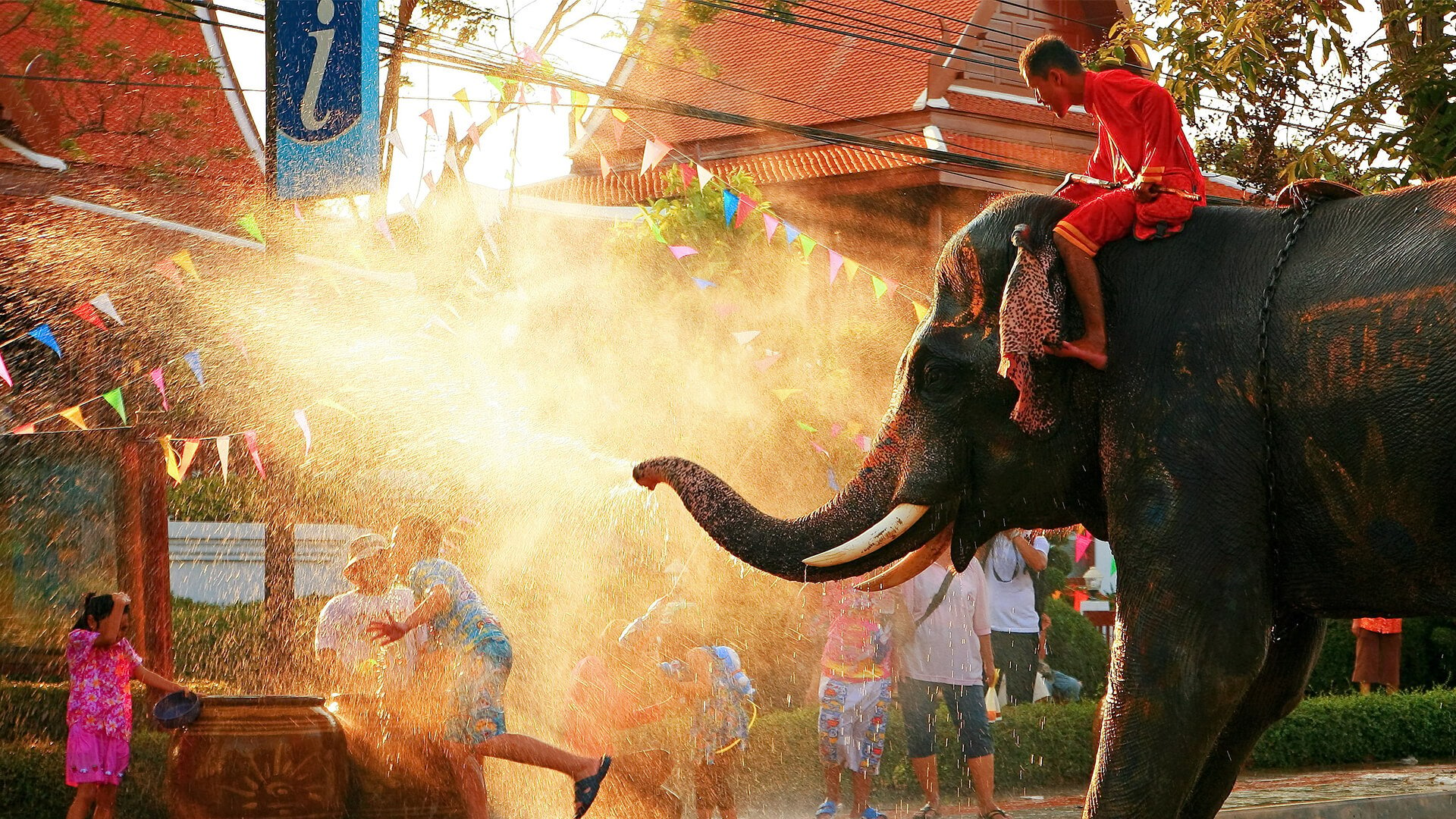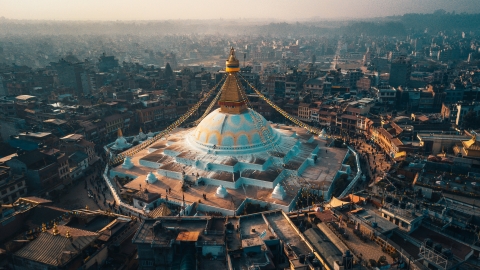Unlike other countries in the world, Laos, Cambodia, and Thailand celebrate the New Year with unique water splashing performances in mid-April every year. This is the transitional period between the dry season and the rainy season. The weather in these countries is very hot, so the ancients created the Water Splashing Festival to welcome the rain, to welcome cool water for plants and people.

Lunar New Year in Southeast Asian countries all takes place around mid-April of the Gregorian calendar, which is the transitional period between the dry season and the rainy season.
The Water Festival is meant to wash away all the worries and evils of the old year, bringing new life, growth, prosperity and happiness to all things in the new year. People splash water on monks to show their respect. Young people splash water on adults to wish them a long life, peace and prosperity. Friends splash water on each other to send their best wishes. The more water they splash, the luckier they will be.
Although the water festival in each country has its own differences, it has the same meaning of bringing coolness and prosperity to all things. Moreover, the time before Tet is the end of the dry season so it is very hot, so splashing water on the body will make the body cool, the soul refreshed and happy.
Songkran Water Festival Thailand
The Thai New Year, Songkran, is known as the "world's biggest water gun fight". This year's festival takes place from April 13 to 15. In addition to splashing water on each other to wish for good luck, the Thai New Year is also celebrated by tourists with water gun games.
The word Songkran comes from Sanskrit, meaning "when the sun moves from the Zodiac to the Taurus in the universe". During this festival, people splash water on each other and the elderly to show respect and wish each other good things. Like the Lao and Cambodian people, on this occasion, Thai people also go to the riverbank or temple yard, competing to build sand pagodas. This Thai custom carries a profound Buddhist philosophy, a grain of sand symbolizes a prayer to erase many sins, saving a soul.
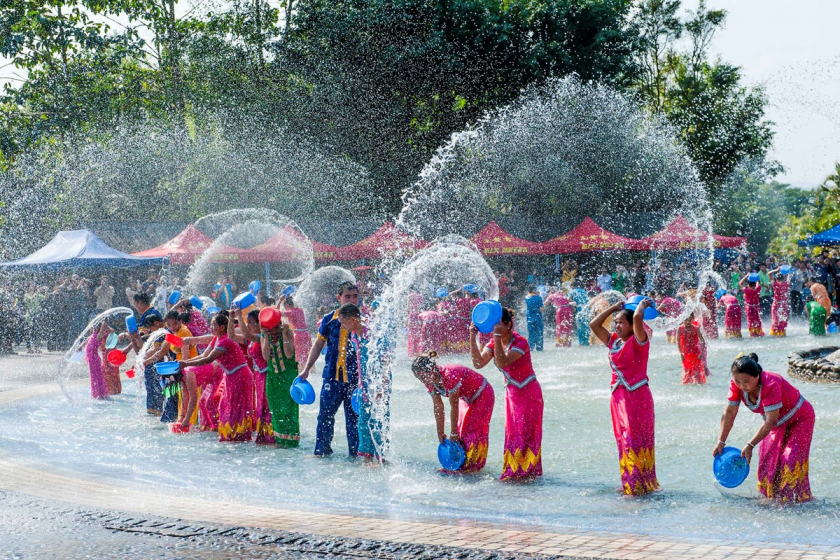
Thailand's Songkran water festival is known as "the world's biggest water gun fight"
Besides, people also go to the temple to attend the Buddha bathing ceremony, bring fruits and vegetarian dishes to offer to the monks, as well as release animals. After that, they wish their parents and grandparents a long life, and finally the most exciting part is to spray scented water on each other to wish them good luck.
Chiang Mai is considered the capital of Songkran festival. This place still preserves many traditional customs of Thai people. Because of the high density of tourists coming to Thailand during the festival, the rate of casualties due to accidents during these days also increases. Tourists are always advised to protect themselves when participating in the festival.
Songkran Water Festival celebrates the Thai New Year with competitions and exciting events taking place for 3 consecutive days, attracting millions of visitors. People of different religions, skin colors and ethnicities also enthusiastically splash water on each other, strengthening the bonds of love and friendship.
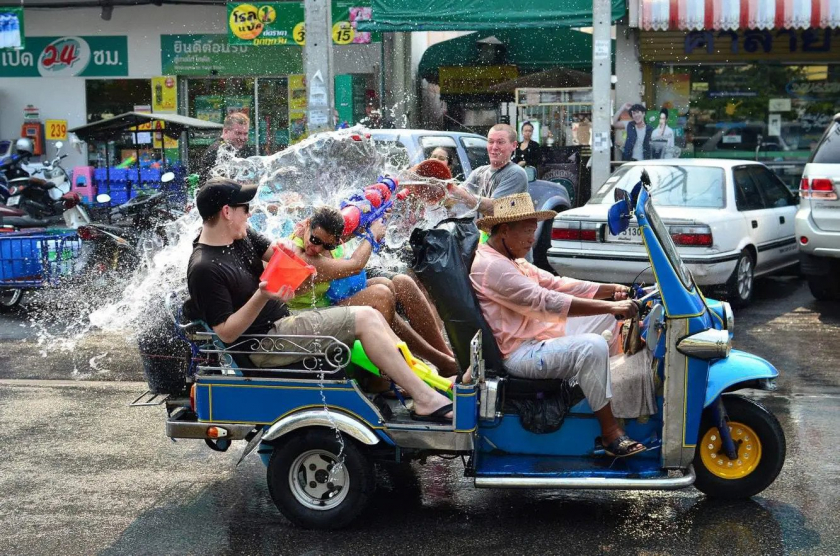
The Water Festival in Thailand always has the participation of many tourists.
Bunpimay Water Festival in Laos
Lao people call the Water Festival Bunpimay. The festival usually takes place from April 14 to 16. Lao people have a unique custom of tying a thread around their wrists. During this time, visitors to their house have their wrists tied with a red or green thread to wish them luck and health. This custom, although simple, deeply reflects the gentle nature of the Lao people.
Lao people not only splash water on themselves but also on their houses, worship objects, animals and production tools. They believe that water will help wash away evil and diseases and wish for a long, clean and healthy new year. Whoever gets wet the most is the happiest.
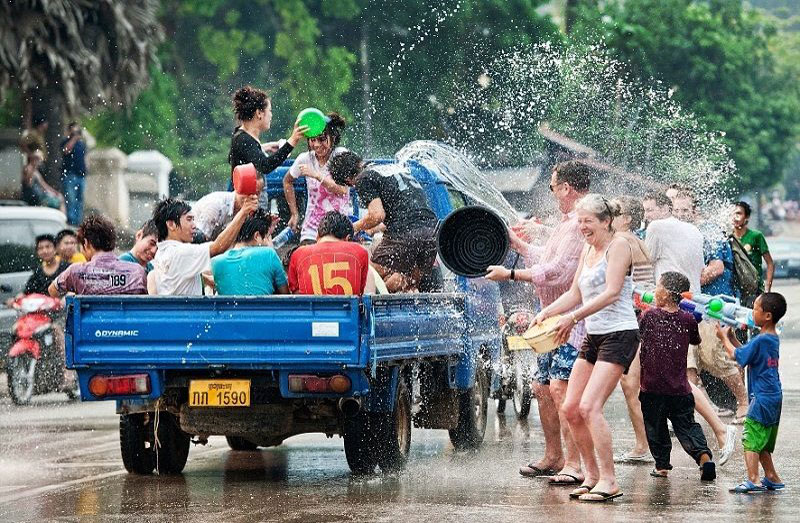
In addition, Lao people also splash water on houses, tools and animals to wash away evil and illness and wish for a good and healthy new year.
For tourists, the ancient capital of Luang Prabang and Vang Vieng are the two most famous destinations in Laos during the Water Festival. In Luang Prabang, which has many temples and is a famous tourist area, visitors will enjoy a clear festival atmosphere with many interesting games.
On this occasion, Lao people also gather at the temple to worship Buddha, bathe Buddha with scented water, listen to monks preach, then splash water on monks, pagodas and trees around the pagoda. Champa flowers and yellow poinciana flowers are two indispensable flowers during Lao New Year. People often weave Champa flowers into necklaces or put them in their hair. Hang yellow poinciana flowers in the house or on the car during the New Year to pray for luck.
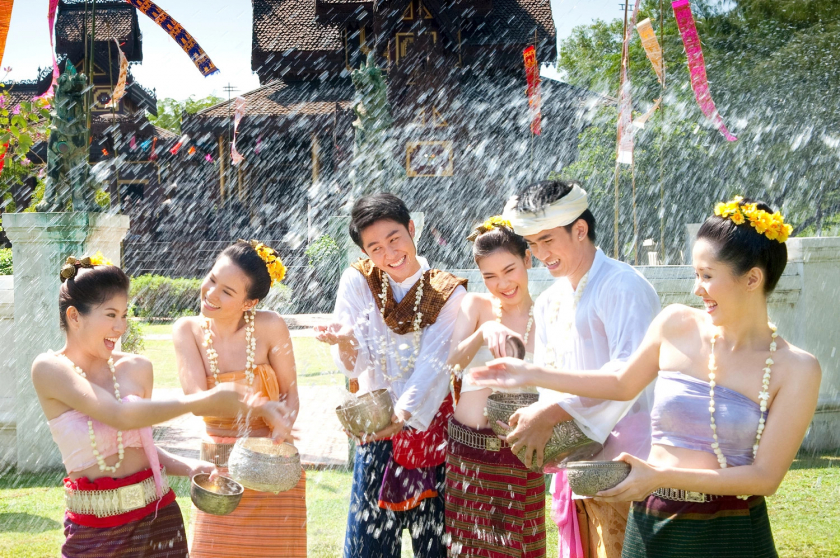
According to Lao tradition, Bunpimay festival usually lasts for three days.
Chol Chnam Thmay water festival in Cambodia
Cambodia's Chol Chnam Thmay water festival also takes place at the same time as Laos, from April 14 to 16 every year. The water festival is an occasion for Cambodians to turn to Buddha and celebrate the new year.
On the first day of the year, Cambodian people wear beautiful clothes, go to the temple to worship Buddha and offer rice to the monks in the temple to show respect and pray for peace for the whole family. Buddhists also perform a water ceremony to splash Buddha statues and senior monks in the temple with scented water to show respect. After that, everyone from the elderly to children splash water on each other to wish good luck for the new year. This festival will take place many traditional games and Apsara folk dances.

Traditional Buddha bathing ceremony
During the first three days of the year, the temples on the main road leading to the Royal Palace are all lit up with lights and flowers. On New Year's Eve, people burn incense and candles to bid farewell to the old year and welcome the new year. On the second day, there is a ceremony to offer rice into the monk's alms bowl to show respect. On the third day, there is a Buddha bathing ceremony, after rituals imbued with religious beliefs.
Like the Laotians, Cambodians also have the custom of building sand mountains. They build sand into 8 or 4 small mountains in different directions and a big mountain in the center, symbolizing the universe to pray for favorable weather and happiness for everyone. In some regions, Cambodians also replace sand with rice, cakes or fruits.

The water support from tankers and large rivers made the atmosphere of the ceremony more bustling and exciting.
This exciting activity not only attracts local people but also foreign tourists. Regardless of age, gender, skin color, race, everyone joins in the fun and exciting water splashing with simple tools such as buckets, basins, water guns, water balloons, etc. In addition, the support of water from large tankers makes the atmosphere of the ceremony more bustling and exciting.






